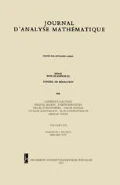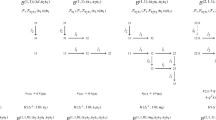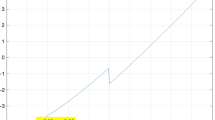Abstract
The Selberg trace formula is of unquestionable value for the study of automorphic forms and related objects. In principal it is a simple and natural formula, generalizing the Poisson summation formula, relating traces of convolution operators with orbital integrals. This paper is motivated by the belief that such a fundamental and natural relation should admit asimple and short proof. This is accomplished here for test functions with a single supercusp-component, and another component which is spherical and “sufficiently-admissible” with respect to the other components. The resulting trace formula is then use to sharpen and extend the metaplectic correspondence, and the simple algebras correspondence, of automorphic representations, to the context of automorphic forms with asingle supercuspidal component, over any global field. It will be interesting to extend these theorems to the context of all automorphic forms by means of a simple proof. Previously a simple form of the trace formula was known for test functions with two supercusp components; this was used to establish these correspondences for automorphic forms with two supercuspidal components. The notion of “sufficiently-admissible” spherical functions has its origins in Drinfeld's study of the reciprocity law for GL(2) over a function field, and our form of the trace formula is analogous to Deligne's conjecture on the fixed point formula in étale cohomology, for a correspondence which is multiplied by by a sufficiently high power of the Frobenius, on a separated scheme of finite type over a finite field. Our trace formula can be used (see [FK′]) to prove the Ramanujan conjecture for automorphic forms with a supercuspidal component on GL(n) over a function field, and to reduce the reciprocity law for such forms to Deligne's conjecture. Similar techniques are used in ['t'F] to establish base change for GL (n) in the context of automorphic forms with a single supercuspidal component. They can be used to give short and simple proofs of rank one lifting theorems forarbitrary automorphic forms; see [″F] for base change for GL(2), [F′] for base change forU(3), and [′F′] for the symmetric square lifting from SL(2) to PGL(3).
Similar content being viewed by others
References
[BDKV] J. Bernstein, P. Deligne, D. Kazhdan and M.-F. Vigneras,Représentations des groupes réductifs sur un corps local, Hermann, Paris, 1984.
[BZ] J. Bernstein and A. Zelevinsky,Induced representations of reductive p-adic groups I, Ann. Sci. Ec. Norm. Sup., 4e série,10 (1977), 441–472.
[B] A. Borel,Admissible representations of a semi-simple group over a local field with vectors fixed under an Iwahori subgroup, Invent. Math.35 (1976), 233–259.
[BJ] A. Borel and H. Jacquet,Automorphic forms and automorphic representations, Proc. Symp. Pure Math.33 (1979), I, 189–208.
[C] P. Cartier,Representations of p-adic groups: A survey, Proc. Symp. Pure Math.33 (1979), I, 111–155.
[CD] W. Casselman,Characters and Jacquet modules, Math. Ann.230 (1977), 101–105; see also: P. Deligne,Le support du caractère d'une répresentation supercuspidale, C. R. Acad. Sci. Paris 283 (1976), 155–157.
[D] V. Drinfeld,Elliptic modules II, Mat. Sbornik102 (144) (1977) (2) (=Math. USSR Sbornik31 (1977), (2), 159–170).
[F] Y. Flicker,Rigidity for automorphic forms, J. Analyse Math.49 (1987), 135–202.
[F′] Y. Flicker,Base change trace identity for U (3), preprint, MSRI (1986); see also:Packets and liftings for U (3), J. Analyse Math.50 (1988), 19–63, this issue.
[F″] Y. Flicker,Stable base change for spherical functions, Nagoya Math. J.106 (1987), 121–142.
[′F] Y. Flicker,Regular trace formula and base change for GL (n), preprint.
[″F] Y. Flicker,Regular trace formula and base change lifting, Am. J. Math., to appear.
[′F′] Y. Flicker,On the symmetric square. Total global comparison, preprint.
[FK] Y. Flicker and D. Kazhdan,Metaplectic correspondence, Publ. Math. IHES64 (1987), 53–110.
[FK′] Y. Flicker and D. Kazhdan,Geometric Ramanujan conjecture and Drinfeld reciprocity law, Proc. Selberg Symposium, Oslo, June 1987.
Author information
Authors and Affiliations
Additional information
Partially supported by NSF grants.
Rights and permissions
About this article
Cite this article
Flicker, Y.Z., Kazhdan, D.A. A simple trace formula. J. Anal. Math. 50, 189–200 (1988). https://doi.org/10.1007/BF02796122
Received:
Issue Date:
DOI: https://doi.org/10.1007/BF02796122




